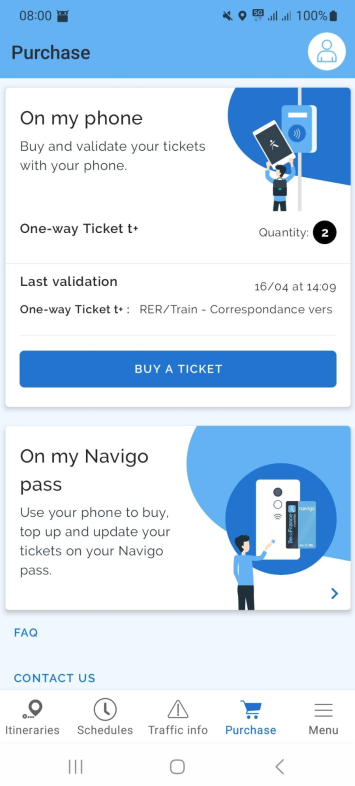Here’s an interesting question that recently popped up with an answer that surprised me. What is heavier, a locomotive or an A320 airliner? Before you read on, think about it for a second.
Continue reading A Locomotive or an Airliner – What’s Heavier?Shrinking a KVM Virtual Machine Image – What About Snapshots?
I run quite a number of virtual machines on a bare metal server in a data center, and most of those are almost identical copies of virtual machines running at home. So my strategy so far for a failure of that server has been to restore service with another set of copies of the VMs running at home. But in recent months, I have started to run a number of VMs there for which I do not have a master on my home server. So I needed a different backup/restore approach here.
I use QEMU/KVM for virtualization on my network servers, and creating a copy of a VM is as easy as copying the disk image file of the VM and transferring it to another place. The challenge: VM images tend to bloat quite a bit over their lifetime, particularly when snapshots are used, and transferring a 50 GB VM image over the Internet and relatively slow VDSL downlink takes quite a bit of time. The solution: Compacting and compressing the image before transfer. Turns out that has an interesting effect on VM snapshots, which are also stored as part of the disk image, that one should be aware of.
Continue reading Shrinking a KVM Virtual Machine Image – What About Snapshots?Online Word Processing – Part 3 – ONLYOFFICE
Collaborating on a text document or spreadsheet with other people and thus editing it in the browser instead of with a local application will definitely become more and more common. Collabora’s Online office solution doesn’t work so well for me, and I won’t use a closed source solution such as Microsoft 365 online for my projects, I was of course looking for yet another solution. In addition to Collabora, Nextcloud has integrated ONLYOFFICE for a number of years now, so this is where I went next.
Continue reading Online Word Processing – Part 3 – ONLYOFFICEOnline Word Processing – Part 2 – MS Office Online
In the previous episode on this topic, I’ve been taking a look at Colabora Online and word processing in the browser in combination with Nextcloud. Unfortunately, in my humble opinion, Colabora Online suffers from a number of shortcomings, that have never been fixed over the years. My main issue with the solution is that the screen is rendered on the server side, which introduces a noticeable lag, which gets worse the further away the server is located. But it seems to be an architectural decision that can’t easily be changed. So how do other online office solutions fare in this regard?
Continue reading Online Word Processing – Part 2 – MS Office OnlineReality Bites – Flight Simulation – Part 12 – Talk Recording – GPN21
There we go, I was at GPN21 the previous weekend and gave a talk about flying in the virtual worlds. The Video Operation Center has been quick and the recording is now online for general consumption. As it was a mostly German event, I decided to give the talk in German. Sorry about that but I guess some of you do speak the language.
The Blog Moves to MariaDB

I’m running a lot of the services I host on my own in Docker containers these days. This makes it pretty much worry free to run and update them. This blog is no exception, it’s been running in containers for two years now. But container images age as well, and from time to time one should have a look if one is still on a stream of a supported version. Case in point: The MySQL container that runs the database of this blog. So far, I’ve been using the MySQL 5.7 stream of Docker images. However, MySQL 5.7’s long term support will end in October 2023, so it was time to go to the next version. A nice quick project to do while at GPN21. It should have been be worry free, no? After all, it’s a container image. Well, not quite.
Continue reading The Blog Moves to MariaDBReality Bites – Flight Simulation – Part 11 – Giving A Talk at GPN21 This Week
While I’m certainly still considering myself a newbie at flight simulation, I’ve accumulated a number of interesting stories about the topic over the last year on how to get started. So I thought I’d talk a bit about it at the upcoming ‘Gulaschprogrammiernacht’ (GPN21) in Karlsruhe this weekend. Yes, it’s not quite like any other topic I’ve talked about over the years, but I like the challenge. GPN21 is mostly a German speaking event, so most talks, including mine, will be held in German. If you can’t make it to Karlsruhe, talks will be streamed live and will be recorded for later consumption. My talk is scheduled on Saturday, 10. June 2023 at 11.10 am.
Online Word Processing – Part 1 – LibreOffice / Collabora
Over the past years, I’ve been using the Collabora Online / LibreOffice integration of my Nextcloud instance at home to collaboratively work on text documents and spreadsheets. While this works in general, there are a number of issues that have not improved for me over the years which make it difficult to encourage people to work with this setup. In this post, I will first have a look at the pain points. In follow up posts, I will then have a look if I get the same behavior when using other products such as Microsoft 365 online and Google docs.
Continue reading Online Word Processing – Part 1 – LibreOffice / CollaboraNFC Payment in the Paris Metro

It took many many years, but I finally used an NFC payment service on a mobile device: For paying in the Paris metro! So how well does this work and how does it compare to other cities?
Digitization – More Complicated?
To me, digitization is something out of the 1980’s, but it seems to be a resurrected topic in the 2020’s. In my opinion, digitization should strive to make things simpler instead of more complicated for the customer. Unfortunately, in reality, many services that are digitized are often just as complicated or even more so than than their analog predecessors. There is one exception that comes to my mind, however, and that is how one can pay in the London metro. It’s so simple that I’ve come to see it as the ‘gold standard’ of a service that was digitized. So let’s have a look at London Transport first and then compare the system used by the Paris metro.
Continue reading NFC Payment in the Paris MetroReality Bites – Flight Simulation – Part 10 – Moving to ‘the Bus’

It was predictable in some way that sooner or later, I would want to do yet another ‘upgrade’ in the flight simulator and move to something bigger. After the turboprop Daher TBM-930, which I started flying last year, it was either a private yet or an airliner. There is lots of choice and in the end, I decided to go for an airliner. The big choice to make at this point then is: Airbus or Boeing!? In the end, I decided to go for an Airbus A320 and here again, there are several implementations to choose from: In the Asobo / MS flight simulator, one can choose the A320 that comes with the simulator itself, the open source FlyByWire A320neo or the closed source and not for free Fenix A320ceo. After some investigation, I came to the conclusion that I’d skip the default A320 and go straight for something with more ‘system depth’. Both the FlyByWire and the Fenix A320 seem to be fantastic products and, contrary to my open source nature, I decided to go for the Fenix A320 first. At 50 British pounds, it is very affordable and is said to have an unrivaled system depth, i.e. pretty much everything the real plane does works in the simulator as well. I have no idea how that could be done for 50 GBP, but I was eager to find out.
Continue reading Reality Bites – Flight Simulation – Part 10 – Moving to ‘the Bus’